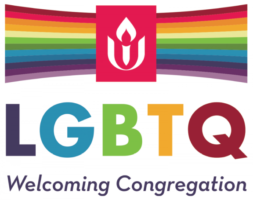Early in my ministry at UU Middleboro– I don’t remember now, just when– I devoted a Sunday service to the importance of covenant in church life. I remember making a distinction between contract and covenant, a distinction that is too often not acknowledged and too often misunderstood. We all have experience with contracts, legal agreements that bind one party to another, that delineate lines of responsibility and limit liability. They are essential in our larger society for ensuring that each party is protected from malfeasance and that each party’s interests are protected. Their function is to make clear the limits of one’s responsibilities.
A covenant works differently. In a covenantal relationship, both parties are interested in contributing what they can to make the relationship work smoothly and productively. When we engage in covenant, we actively wish to contribute to the success of the joint enterprise. We don’t seek to limit our responsibility, we seek to extend our goodwill in a generous way to promote the flourishing of community. To this end, I proposed that the church adopt a covenant statement, in effect a promise that each of us makes to do our best to contribute to the best interests of the whole, a promise to behave in a way that honors each other’s dignity and individuality. I had been made aware of several times over the past few decades when certain conflicts within the church destroyed or threatened to destroy the fabric of community, and I was convinced that adopting a covenant statement that was read aloud in community on a weekly basis would be effective in reminding us of our duty to one another even when opinions collide and emotions ride high.
Fortunately, it seemed to me, the language and the spirit of a covenant statement already existed, though it was buried in a very long– too long– mission statement that the church had adopted twenty years ago. There was language enough to construct several versions of a covenant statement by making only slight modifications. I constructed several sentences that could be used as covenant statements. Each Sunday for eight or so Sundays in a row, I offered one version or another of these statements, three of them, for possible use as a covenant statement. I was careful to explain this process from the pulpit each Sunday. I made it clear that these were “unison readings in the form of a covenant,” rather than a covenant statement per se, because that would have to be agreed to by the entire membership of the church.
I asked Andrea Priest to head up a committee to examine the three statements and find the best way to streamline the essence of the covenantal spirit. She recruited Cindy Benard to join the committee; the other three members she approached declined to participate for one reason or another. I stepped up to fill in the third position. The committee came up with a draft statement. This was presented to the congregation to consider for formal adoption. Members were encouraged to speak to committee members with any suggestions they had for modification. No one approached the committee. At the October congregational meeting, the proposal to adopt the language did not pass because there were several objections, the most surprising to me being, “This is the first I’ve heard of it and I need more time to consider it.”
Where did we go wrong? Though I think we did just what we should have at our Sunday services, I’m not sure that we adequately explained the process in print– in our newsletter and UU Updates. Certainly, we did not mention it on our website. Even more significant, I was unaware until after the vote at the meeting that, according to our bylaws, the language for such a proposal (which was put forward by a member in good standing) should have been explicitly stated in the warrant that announced the meeting.
So– what are our next steps? The Parish Committee, at its January meeting, offered the following, “Suggestions include post the Covenant in newsletter and Updates; encourage feedback; follow up with announcement at worship service. We also need to be sure language is clear in warrant when the time comes for the congregation to vote on the Covenant.”
I am not suggesting that we scrap the process we have adopted and that we start from scratch because the language in the draft covenant statement has already been approved by the congregation in its mission statement of 2002. This is a statement that the congregation claimed as its own and owned as such for over twenty years. The Parish Committee and I hope that this plan for disseminating the relevant information will be acceptable to the congregation. If not, of course, there is an option, which is to wipe the slate clean and begin again. The congregation may wish to take this path. If so, it will meet with my blessing, but the time necessary for that task exceeds the amount of time left in my interim ministry. Perhaps it, as well as creating a vision statement, will be seen as an appropriate task for the next minister. In the meantime, we will continue to use the draft language as a unison reading on Sundays, just not as an official covenant statement.
As always, my blessings, and see you in church,
Peter

